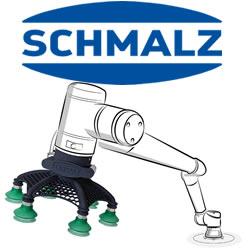iRobot Unveils Its First Multi-Robot Tablet Controller for First Responders, Defense Forces and Industrial Customers
NASA's Free Flying Robot Challenge
FPV Forest Quad Racing
Soft Robotics Toolkit
Robot Octopus Takes to the Sea
Nixie: The First Wearable Camera That Can Fly
How To Tell When A Robot Has Written You A Letter
Pawly: Play With Your Pet Anywhere Anytime
ArduIMU V4: An Arduino Based Integrated Measurement Unit
MIT's Cheetah Untethered Running And Jumping!
YuMi: ABB's Collaborative Robot
ReWalk Robotics Hopes to Raise $50M in IPO
Dyson 360 Eye
High Speed Bipedal Robot Running Using High Speed Visual Feedback
Beginners Tutorial: Autonomous Robot Control Theory
Records 541 to 555 of 849
First | Previous | Next | Last
Industrial Robotics - Featured Product

